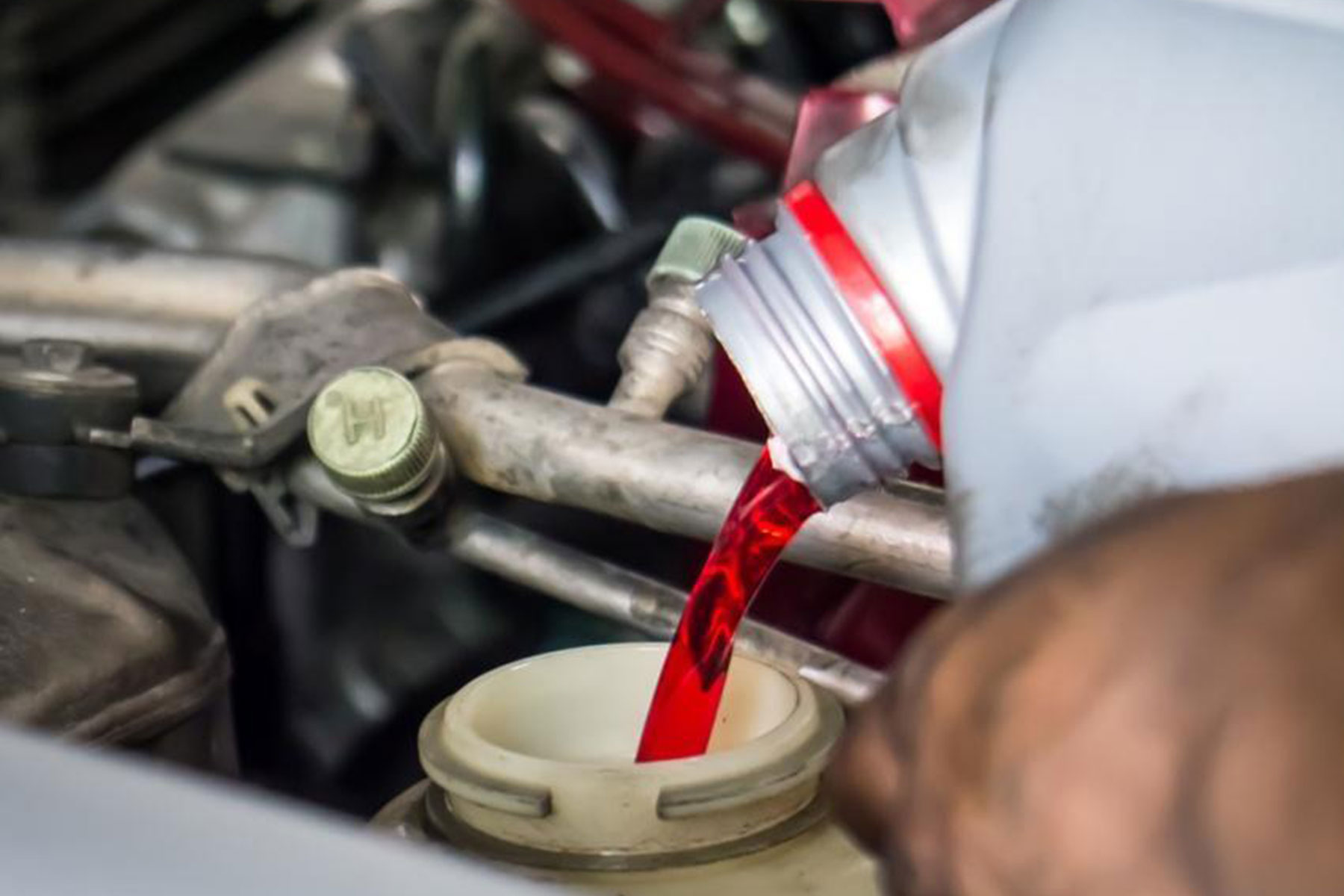Transmission fluid (or transmission oil) is a kind of oil that helps lubricate various moving components within the transmission. The fluid is also a coolant when it comes to automatic transmissions. Transmission fluid is uniquely made for both automatic and manual transmissions. Typically, the oils involved tend to vary from one type of system to another.
Some automatic transmissions apply automatic transmission fluid, better known as ATF, as a gear lubricant and hydraulic fluid. Much like other hydraulic systems, ATFs might be pressurized using a pump and even controlled by valves.
On the other hand, manual transmissions apply proprietary gear lubricants. These can vary from synthetic fluid to straight mineral oil.
What Are the Types of Transmission Fluids? Is There a Difference With Car Transmission Fluid?
In general, a wide range of fluids are applied for different transmissions. Transmission systems can generally be grouped into two: automatic transmissions and manual transmissions. This is the same with car transmission systems. Automatic transmissions usually use something known as – as you might already know – automatic transmission fluid (ATF). The proper application of automatic transmission fluid is much dependent on the technology used for your car’s transmission: DCT/DSG, CVT, and much more. They’re quite specific when it comes to application.
Secondly, we have manual transmissions. In this case, they mostly apply a wide range of oils that comprise the API specification GL-4. It would be prudent to go through your owner’s manual to ensure that you are utilizing the proper fluid for your vehicle’s transmission.
And What Is the Difference Between Transmission Fluid and Hydraulic Fluid?
Hydraulic fluid is a medium that helps transmit power in a standard hydraulic system. The foaming resistance, oxidation stability, wear protection, and viscosity are all typical factors that will help establish the kind of hydraulic fluid.
Typically, hydraulic fluid (or hydraulic oil) is classified by its actual role in the system. It might help with a broad scope of functions, such as dissipating heat, avoiding corrosion, transference of hydraulic energy, and lubrication of system cylinders, valves, and pumps.
Apart from their primary role, hydraulic fluids share some qualities which make them much more suitable for application in hydraulic systems. These characteristics might include lubricity, fire and flash resistance, chemical and physical stability, low foaming properties, temperature, and other physical properties.
Transmission Fluid in a Forklift: What You Need To Know
Have you recently examined your lift truck’s transmission? Has anyone? In most cases, this can be treated as an out-of-sight-out-of-mind kind of issue. Is it making some strange noises and drawing attention to itself? It could be a bit late now. Most people overlook the fact that it requires routine maintenance. What’s more, the consequences for not practicing this might be pretty costly and might remind you of the overall significance. However, this can be disruptive to the application or uptime of the machine.
Is it time to consider taking a look at your forklift transmission? Do you notice a maintenance sticker? Does it note down a transmission service? If so, then what was the actual hour meter reading for the last time? The manufacturer will often suggest a transmission oil change – after every 1000-1200 hours. Is that information noted down on the tranny filter? These are the many questions you should be asking yourself.
The transmission oil usually experiences a lot of abuse in order to heat. With the hard shifting it experiences all over the day, the fluid requires to be in its optimum condition to secure your equipment. By pulling out the dipstick and looking at the fluid, it could really help. You could also try smelling it. Apart from being clean and not dark, the fluid should never smell “burnt.”
Your service agent (or even yourself) should be dating the transmission filter, updating the service sticker, and adding the hour meter reading whenever it is changed. It will enable everybody to quickly tell whether you need to change it again or plan when it could get changed. The transmission is quite a costly piece of equipment to repair. With some care and time, you can ensure that you don’t realize this when it is too late. Watch for transmission hoses that are hard and brittle, loose hose clamps, or even those needing two hose clamps to remain tight. Hoses shouldn’t require double hose clamps.
It’s also worth noting that when you’re replacing the transmission fluid, ensure that it is the recommended fluid. Check out ciftransmissions.com/forklift-transmission-fluid/ for more information about servicing your forklift.

